Run, Bus... RUN!
Run Bus... RUN!
Windows
Leaky windows are not good. Ever. After removing a few of the windows and frames, it was apparent the gaskets had compressed so much over the years, they were allowing water to seep in where it shouldn't be (evidently a common problem with old passenger buses). We just had to get them sealed better.

Most of the gaskets weren't even stuck to the frames any longer. The adhesive had long since dried up and broken down.

The back left window shown above was for the bathroom. It was divided into two sections to allow for a vent, of sorts. So, it needed to be replaced, as well as one other window (frame) that had been bent somehow.
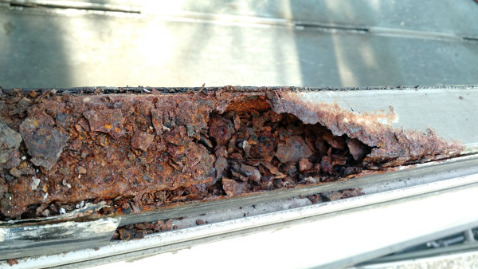
Some of the rust below the frames was pretty bad. This one made us really question what to do about it. We didn't have the time, resources or even desire to "restore" a bus. It was quit a dilemma for a time.
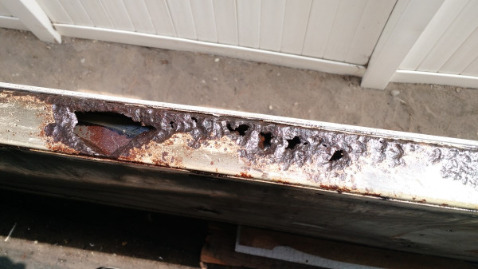
In the end, we just decided to clean up the rust as best as possible, soak all the spots we discovered in Penetrol, and hope for the best. Reason told us it probably took quite a while for these (few) spots to develop, and not all the windows were effected. As well, it was clear the thing was and would hold together structurally for a long time to come.

We removed all the (side) windows from the bus, and cleaned each one individually. In order for them to be resealed well, the old gaskets and dried/sticky adhesive had to be removed from the aluminum frames. We used up most of a gallon of "Pro Strength" Goof Off (it's good stuff!).
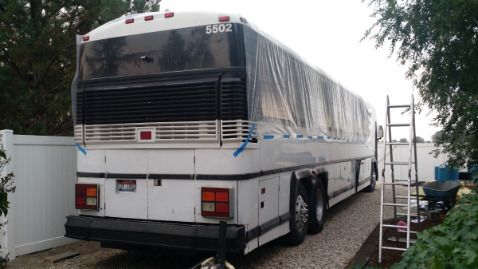
During moments of inclement weather (and also fearing that perhaps the roof wasn't as sealed as it could be) we covered the entire top and sides of the bus with heavy duty plastic (6 mil?) to keep the rain from entering the bus. This was a pain in the butt, and had me wishing for a nice, big, heated shop more than once.

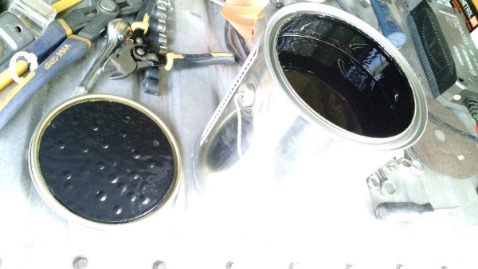
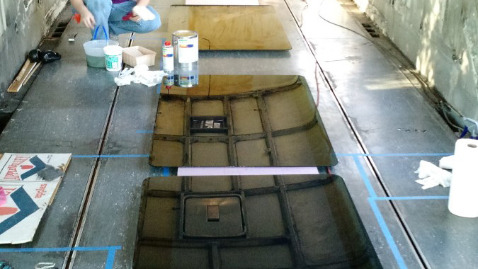
In most bus conversions, the windows are usually removed completely, and the remaining holes are skinned over with steel or aluminum plating. This apparently allows for better insulation. However, in our minds, if we did the same, we'd just end up with a BUS that's trying to look like an RV. Fine for most, I guess, but we sorta wanted our bus to still look like a bus (we just like the look of it, call us crazy).
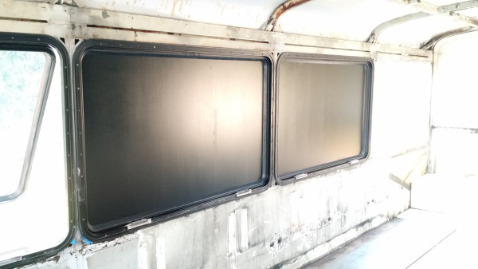
As well, we wanted to have more windows, so the interior feels bigger and brighter. We didn't really plan to spend our travels in super cold or hot places, for long periods of time, so were not as concerned with the spending the added time and expense covering them all up. Instead, we decided to simply paint the inside of all the windows we would later insulate over and cover up, using black Glass Paint. Super spendy, but worked quite well. It etches itself into the glass, blocks all light, and still looks like a dark window from the outside. :-]
Unfortunately, I didn't get any photos of the action (I was busy helping), but to ensure the frames were water tight, we had the fellas at a local automotive windshield shop use their magical urethane adhesive to glue the frames back into place; sealing them all quite nicely from the outside. Then, for good measure, I later added more (black) caulk inside and out wherever it seemed appropriate. Hopefully, they'll now never, ever leak again.
© Copyright 2017-2025 Run, Bus... Run! (RBR). All rights reserved.